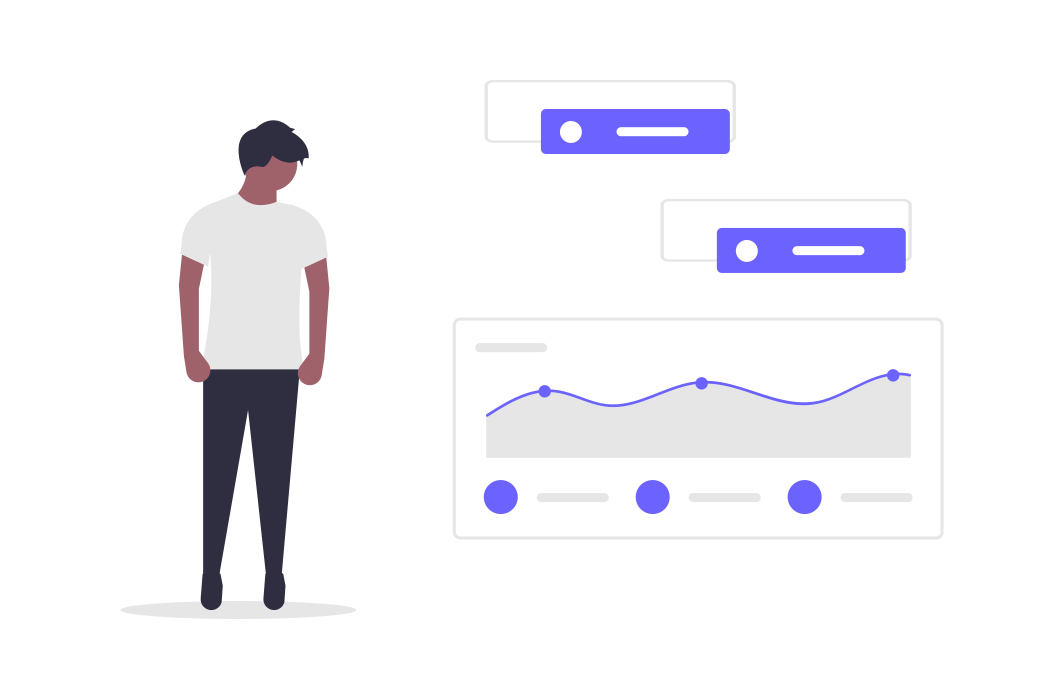In today’s competitive B2B landscape, intent data has emerged as a powerful tool for demand generation, offering a strategic edge in identifying and targeting high-potential prospects. By understanding a prospect's intent, marketers can craft highly personalized and timely campaigns that drive conversions. This blog will explore advanced tactics for utilizing intent data to optimize your demand generation strategies and maximize your ROI.
Understanding Intent Data in Demand Generation
Intent data reflects the digital behaviors and signals that indicate a prospect's interest or intent to purchase. These signals can include website visits, content downloads, social media interactions, and searches related to a particular topic or solution. By leveraging this data, marketers gain valuable insights into where a potential buyer is in their purchasing journey, allowing for more targeted and effective engagement strategies.
Intent Data Types:
-
First-Party Intent Data: Collected directly from your owned properties, such as your website, CRM, and marketing automation platforms. It includes behavioral data such as page views, form fills, and email opens.
-
Third-Party Intent Data: Sourced from external data providers and publishers, offering a broader view of a prospect’s behavior across different channels and websites. This type of data provides insights into topics being researched, competitor engagement, and potential buying signals.
Advanced Tactics for Leveraging Intent Data
To fully harness the power of intent data in your demand generation efforts, it’s crucial to implement advanced tactics that align with your marketing and sales objectives. Below are some strategies to consider:
1. Refine Audience Segmentation
Intent data allows for more precise audience segmentation based on behavioral signals rather than traditional demographic data alone. By analyzing intent signals, you can create dynamic segments that reflect where prospects are in the buyer's journey. For example, you can segment audiences based on the topics they are researching, their level of engagement with your brand, or their interaction with competitor content. This refined segmentation enables more tailored messaging and higher engagement rates.
2. Enhance Personalization and Messaging
Once you've segmented your audience based on intent data, the next step is to craft personalized messages that resonate with each segment. Advanced personalization tactics could include dynamic content insertion on your website, personalized email marketing campaigns, or targeted ads that reflect the prospect's recent behavior. Intent data helps ensure your messaging is highly relevant, which increases the likelihood of conversion.
3. Optimize Content Strategy
Understanding the topics and keywords your prospects are engaging with enables you to tailor your content strategy to their interests. Use intent data to identify trending topics and pain points, and then create content that addresses these areas. This can include blog posts, white papers, webinars, and case studies that are aligned with what your target audience is currently searching for and consuming. This approach not only boosts your content’s relevance but also positions your brand as a thought leader in your industry.
4. Improve Lead Scoring Models
Integrating intent data into your lead scoring models enhances your ability to prioritize high-quality leads. Traditional lead scoring models often rely on basic demographic data and engagement metrics. However, by incorporating intent signals—such as specific keyword searches, engagement with competitor content, or repeated visits to key pages—you can better gauge a prospect's readiness to purchase. This allows your sales team to focus their efforts on the most promising leads, ultimately improving conversion rates.
5. Align Sales and Marketing Teams
Intent data provides a common language for sales and marketing teams, facilitating better alignment and collaboration. By sharing insights derived from intent data, both teams can work together to create targeted campaigns that address specific pain points or interests of high-intent prospects. This alignment ensures a consistent customer experience and improves the efficiency of both marketing efforts and sales outreach.
6. Target Competitor’s Prospects
Intent data can reveal when a prospect is actively researching a competitor’s products or services. With this insight, you can craft specific campaigns that target these prospects, highlighting your unique value propositions and differentiators. By strategically positioning your brand against competitors, you increase your chances of capturing market share from competitors and converting these prospects into customers.
7. Implement Predictive Analytics for Demand Forecasting
Advanced predictive analytics, powered by intent data, can help forecast demand and identify future sales opportunities. By analyzing historical data and current intent signals, you can predict which accounts are most likely to convert, which products or services they might be interested in, and when they are likely to make a purchase. This allows you to proactively tailor your marketing strategies and allocate resources more effectively.
8. Leverage Multi-Channel Campaigns
Intent data enables you to engage prospects across multiple channels with a consistent message that resonates with their current needs and behaviors. Whether it’s email, social media, search ads, or direct mail, using intent data to inform your multi-channel campaigns ensures that your messaging is both relevant and timely. This multi-channel approach increases your visibility and engagement, driving higher conversion rates and revenue growth.
9. Monitor and Adjust in Real-Time
One of the most significant advantages of using intent data is the ability to monitor campaign performance and adjust strategies in real-time. By continuously analyzing intent signals, you can quickly identify shifts in a prospect's behavior or interests and adjust your campaigns accordingly. This agile approach ensures you stay ahead of competitors and maintain a high level of engagement with your target audience.
Conclusion
Incorporating intent data into your demand generation strategy is no longer optional—it's a necessity for staying competitive in today’s market. By understanding and leveraging the digital signals that indicate a prospect’s buying intent, you can create highly targeted and personalized marketing campaigns that drive demand and increase conversions. Implementing these advanced tactics will ensure that you make the most of your intent data, driving success in your demand generation efforts.


